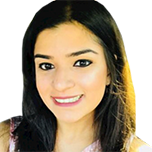What is the EU’s “safe asset” bond and what might it mean for you?
The European Union announced landmark debt plan aimed at helping EU countries recover from the Covid pandemic, financed by issuing “safe asset” bonds. Saloni Sardana explains what it is.


The European Union announced a $1trn landmark debt plan last week aimed at helping EU countries recover from the Covid pandemic.
The plan – the NextGeneration EU programme and recovery fund – will give loans and grants to member states and includes a rescue fund of up to €800bn and a €100bn emergency jobs programme.
It is expected to issue a total of €80bn of debt throughout the course of the year, and paves the way for Europe to develop its own regional “safe asset” bonds that could act as a rival to US Treasury bonds, the world’s go-to and most liquid sovereign bond.
MoneyWeek
Subscribe to MoneyWeek today and get your first six magazine issues absolutely FREE

Sign up to Money Morning
Don't miss the latest investment and personal finances news, market analysis, plus money-saving tips with our free twice-daily newsletter
Don't miss the latest investment and personal finances news, market analysis, plus money-saving tips with our free twice-daily newsletter
So what is the recovery fund and how will it affect investors? Here’s a broad summary of the story so far.
What just happened?
The EU raised €20bn last week, from selling its ten-year bond – the first bond to fund the programme. Issuance is expected to last until 2026.
The deal attracted record interest with debt being sold at a similar scale to that of Germany and Spain, a spokesman for JPMorgan told Reuters.
What is the Next Generation EU Fund?
The Next Generation EU Fund, often simply called the EU recovery fund, is the EU’s post-Covid recovery package worth €800bn, agreed by the European Council in July 2020. Combined with the NextGeneration EU is the bloc’s largest stimulus package to date.
The value of the EU’s outstanding bonds has more than doubled since summer 2019 to €143.8bn, reports Bloomberg, reflecting a growing trend in regionally backed debt.
Until now, developing anything on par with the US Treasury bond was merely a pipe dream for EU policymakers. But this plan means EU-wide securities could replace German government bunds as the bloc’s flagship credit-market bond and gradually play a similar role to that of US Treasuries.
But if German debt is so safe, then why does Europe want another safe asset?
While German debt is classified as very safe by most big ratings providers –reflected through a credit rating of AAA – there is also a scarcity of German bunds. Also, bunds yield a negative return of 0.25%, so investors holding any bund until maturity are almost guaranteed to make a loss. Having a regional safe asset backed by all countries in the bloc is likely to make markets less fragmented.
Another big aim of the plan is to bring greater stability to European markets and eradicate disparities in the way member states price their bonds. At present, Germany prices sovereign notes against bunds, notes Bloomberg. Other member states, however, use a combination of their own bonds, mid-swaps, and market-derived interest rates to calculate the value of their bonds. Creating a safe European asset would therefore theoretically eliminate widespread pricing disparities.
What does this mean for investors?
The main result for investors is likely to be lower borrowing costs. Countries with lower credit ratings such as Italy, could stand to benefit as their debt is usually more expensive. Banks then pass on the cost to investors by hiking up interest rates. But the recovery plan will allow banks to issue loans using EU-backed collateral, driving down lending costs.
The recovery fund will also expand the bloc’s growth by 4.1% in a best-case scenario, and 1.5% in a worst-case scenario, according to financial analytics company S&P Global.
Overall, the plan is likely to boost liquidity and reduce volatility. It also makes lending easier for European banks as they can use the EU safe asset as collateral while, theoretically, lowering the risks of defaults.
What are the main challenges to implementing the plan?
There is the risk the EU reverts back to its previous position after four years. This would make achieving an EU safe asset more challenging as such a move may lead to an insufficient amount of securities required in order to generate a safe asset status.
Then there’s the chance of some wild case scenarios panning out such as a breakup of the euro area and it remains unclear how German bunds would fare in such a scenario. There is some speculation that this plan is a rehearsal for how the bloc would cope with potential defaults by high-debt nations within the eurozone, reports Bloomberg.
Why are some banks being barred from it?
The plan made headlines not just because of the bond sale but because ten of the world’s biggest banks are barred from taking part in it. Why?
Banks including JPMorgan, Barclays, Bank of America, Citigroup, Nomura, Deutsche Bank, UniCredit Spa, NatWest, Natixis and Credit Agricole have been banned from taking part until the European Commission concludes whether they have taken enough measures to fix previous antitrust breaches.
Bloomberg estimates last weeks’ €20bn issuance may have also generated €20m in fees, so the fact the banks have been barred comes at a hefty cost to them.
What is next?
The EU plans to hold two more sales in a process called syndication before August and is expected to auction bonds for the first time in September. The aim is to generate around €150bn-€200bn euros for each year of issuance until 2026 with a yield curve extending to 30 years, says Bloomberg. The EU will first issue short-dated debt to generate funds swiftly.
Get the latest financial news, insights and expert analysis from our award-winning MoneyWeek team, to help you understand what really matters when it comes to your finances.
Saloni is a web writer for MoneyWeek focusing on personal finance and global financial markets. Her work has appeared in FTAdviser (part of the Financial Times), Business Insider and City A.M, among other publications. She holds a masters in international journalism from City, University of London.
Follow her on Twitter at @sardana_saloni
-
 8 of the best properties for sale with indoor gyms
8 of the best properties for sale with indoor gymsThe best properties for sale with indoor gyms – from a four-storey mews house in London’s Knightsbridge, to a 1920s Arts & Crafts house in Melbury Abbas, Dorset
-
 Top stock ideas for 2026 that offer solidity and growth
Top stock ideas for 2026 that offer solidity and growthLast year’s stock ideas from MoneyWeek’s columnist and trader, Michael Taylor, produced another strong performance. This year’s stocks look promising too
-
 No peace dividend in Trump's Ukraine plan
No peace dividend in Trump's Ukraine planOpinion An end to fighting in Ukraine will hurt defence shares in the short term, but the boom is likely to continue given US isolationism, says Matthew Lynn
-
 Europe’s new single stock market is no panacea
Europe’s new single stock market is no panaceaOpinion It is hard to see how a single European stock exchange will fix anything. Friedrich Merz is trying his hand at a failed strategy, says Matthew Lynn
-
 What's behind the big shift in Japanese government bonds?
What's behind the big shift in Japanese government bonds?Rising long-term Japanese government bond yields point to growing nervousness about the future – and not just inflation
-
 Halifax: House price slump continues as prices slide for the sixth consecutive month
Halifax: House price slump continues as prices slide for the sixth consecutive monthUK house prices fell again in September as buyers returned, but the slowdown was not as fast as anticipated, latest Halifax data shows. Where are house prices falling the most?
-
 Rents hit a record high - but is the opportunity for buy-to-let investors still strong?
Rents hit a record high - but is the opportunity for buy-to-let investors still strong?UK rent prices have hit a record high with the average hitting over £1,200 a month says Rightmove. Are there still opportunities in buy-to-let?
-
 Pension savers turn to gold investments
Pension savers turn to gold investmentsInvestors are racing to buy gold to protect their pensions from a stock market correction and high inflation, experts say
-
 Where to find the best returns from student accommodation
Where to find the best returns from student accommodationStudent accommodation can be a lucrative investment if you know where to look.
-
 The world’s best bargain stocks
The world’s best bargain stocksSearching for bargain stocks with Alec Cutler of the Orbis Global Balanced Fund, who tells Andrew Van Sickle which sectors are being overlooked.
